Formula I3- | ||
 | ||
Slow motion contact explosive nitrogen triiodide
In chemistry, triiodide is usually referred to the triiodide ion, I−
3. This anion, one of the polyhalogen ions, is composed of three iodine atoms. It is formed by combining aqueous solutions of iodide salts and iodine. Some salts of the anion have been isolated, including thallium(I) triiodide (Tl+[I3]−) and ammonium triiodide ([NH4]+[I3]−). Triiodide is observed to be a red colour in solution .
Contents
- Slow motion contact explosive nitrogen triiodide
- Make nitrogen triiodide explosives
- Nomenclature
- Structure and bonding
- Properties
- Preparation
- References
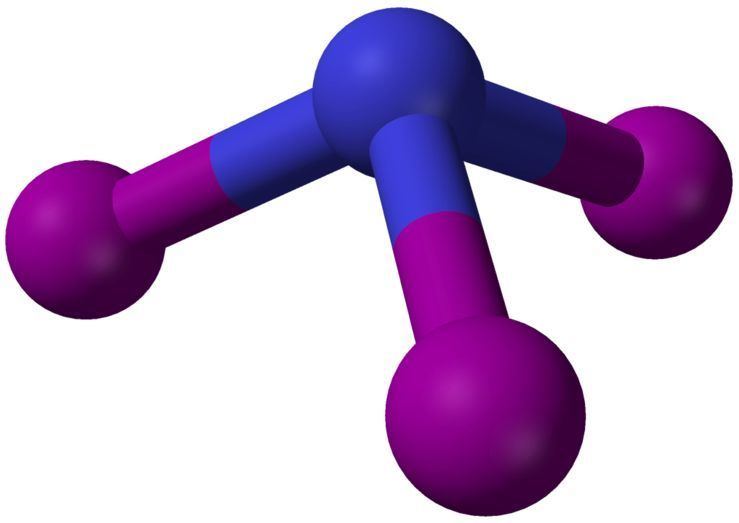
Make nitrogen triiodide explosives
Nomenclature
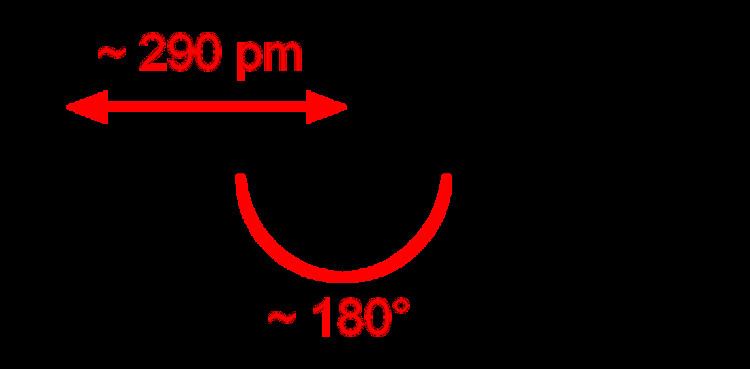
Other chemical compounds with "triiodide" in their name may contain three iodide centers that are not bonded to each other as the triiodide ion, but exist instead as separate iodine atoms or iodide ions. Examples include nitrogen triiodide (NI3) and phosphorus triiodide (PI3), where individual iodines are covalently bonded to a central atom. As some cations have the theoretical possibility to form compounds with both triiodide and iodide ions, such as ammonium, compounds containing iodide anions in a 3:1 stoichiometric ratio should only be referred to as triiodides in cases where the triiodide anion is present. It may also be helpful to indicate the oxidation number of a metal cation, where appropriate. For example, the covalent molecule gallium triiodide (Ga2I6) is better referred to as gallium(III) iodide to emphasise that it is iodide anions that are present, and not triiodide.
Structure and bonding

The ion is linear and symmetrical. According to VSEPR theory, the central iodine atom has three equatorial lone pairs, and the terminal iodines are bonded axially in a linear fashion, due to the three lone pairs bonding to the central iodine-atom. In the molecular orbital model, a common explanation for the hypervalent bonding on the central iodine involves a three-center four-electron bond. The I−I bond is longer than in diatomic iodine, I2.
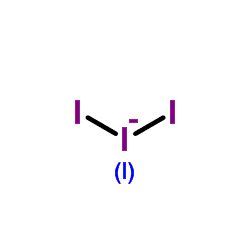
In ionic compounds, the bond lengths and angles of triiodide vary depending on the nature of the cation. The triiodide anion is easily polarised and in many salts, one I−I bond becomes shorter than the other. Only in combination with large cations, e.g. a quaternary ammonium such as [N(CH3)4]+, may the triiodide remain roughly symmetrical. The dimensions of the triiodide [Ia−Ib−Ic]− bonds in a few sample compounds are shown below:
Properties
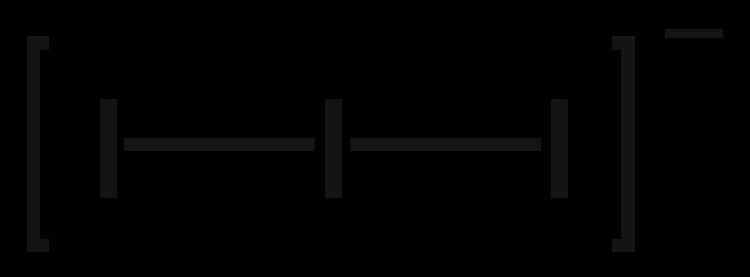
The triiodide ion is the simplest polyiodide; several higher polyiodides exist. In solution, it appears yellow in low concentration, and brown at higher concentration. The triiodide ion is responsible for the well-known blue-black color which arises when iodine solutions interact with starch. Iodide does not react with starch; nor do solutions of iodine in nonpolar solvents. Lugol's iodine contains potassium iodide as well, so that significant amounts of triiodide ion can exist in solution.
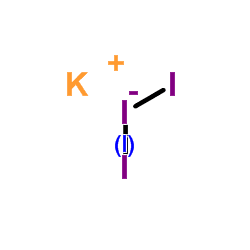
Tincture of iodine, although nominally a solution of elemental iodine in ethanol, also contains significant amounts of triiodide, due to its content of both iodide and water.
Preparation
The following exergonic equilibrium gives rise to the triiodide ion:
I2 + I− ⇌ I−3
In this reaction, iodide is viewed as a Lewis base, and the iodine is a Lewis acid. The process is analogous to the reaction of S8 with sodium sulfide, except that the higher polyiodides have branched structures.
